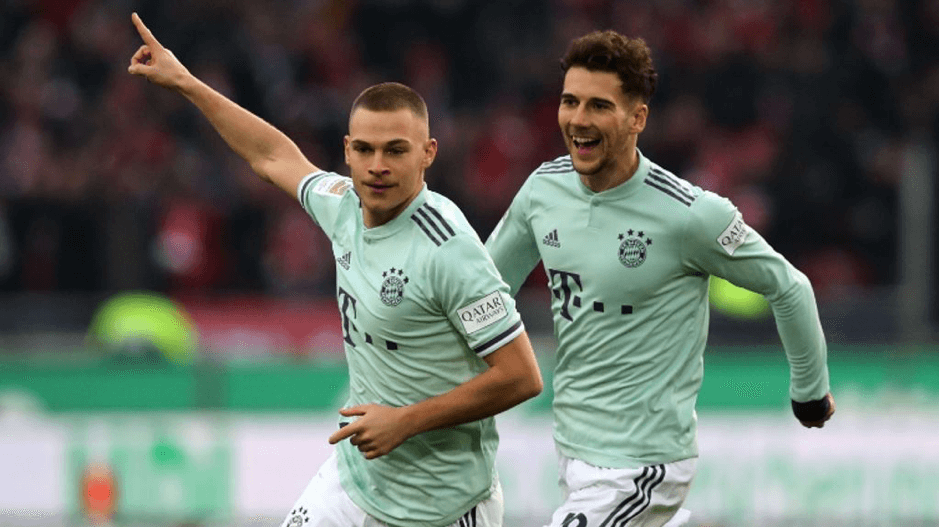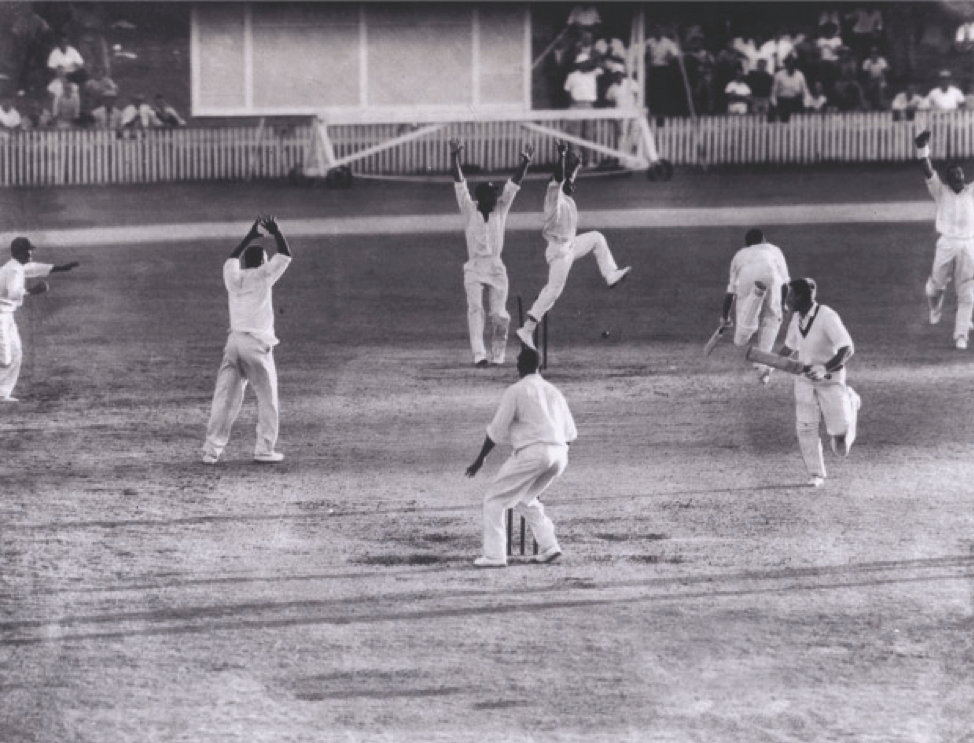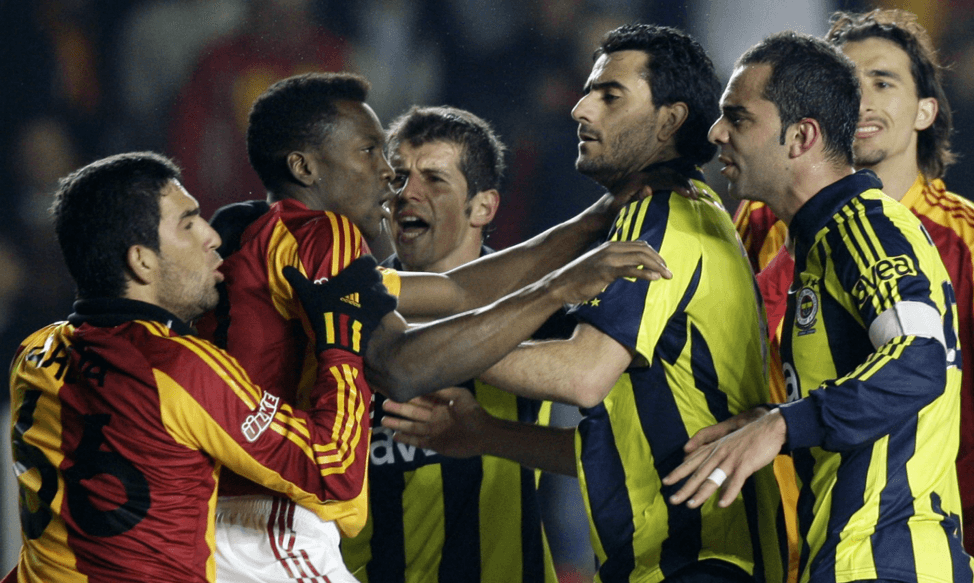THE EVOLUTION OF THE MAKÉLÉLÉ ROLE

A true winner; Makélélé passionately designating orders (Genside Sport)
Shuttling up and down the pitch, fiercely snatching away the ball from the unsuspecting prey, the destroyer moves in a way that is akin to a race-grade 18-wheeler; powerful and always on the move. But where did this torrid affair between tactic and brutality begin? Tracing things back to its unassuming originator, Claude Makélélé, one finds that like so many great midfielders of his generation and beyond, he was an incredibly gifted, hardworking and tenacious player, capable of playing multiple positions in the centre of the pitch. However, unlike any other midfielder of his generation, he revolutionized and unbeknownst to him, created what is known as the modern-day defensive midfielder.
Makélélé was born in Zaire (now known as DR Congo) and moved along with his parents to Savigny-le-Temple, a suburb in Paris in 1977 when he was four years old. At 15, his talents for football were recognized, and he signed with U.S. Melun in the city of Melun, carrying his father’s legacy ahead. Moving around to Brest when he was 16, he found that he didn’t enjoy playing much in the region. However, Nantes was where Makélélé would discover his pleasure for football.
Recruited in 1991 when he was only 18, he slowly made himself one of the first names on the team sheet by the 1992-93 season. The still teenaged Makélélé was then transferred to Celta Vigo in Spain, where he would go from strength to strength, and similarly at Real Madrid, where he was hailed as the engine of the team to sign for Chelsea where he was revered as a legend.
Looking at how he functioned in legendary Italian manager Arrigo Sacchi’s Galacticos setup, we see that Makélélé had a keen eye for the ball-winning tackle. As Sacchi himself put it, “we knew that Zidane, Raúl and Figo didn’t track back, so we had to put a guy in front of the back four who would defend.” This was a very under-the-umbrella expression of Makélélé’s talents, as he did more than protect the back four.
It was his job to roam and disrupt the other team’s rhythm and flow, win the ball almost at will and bring it forward. He usually started deep, marking his opposing hole player. Makélélé made life difficult for his opponents, and it was at Madrid that his transformation into a holding midfielder was completed. So much was his impact that when Florentino Perez decided Makélélé wasn’t flashy enough to be a Galactico and sold him to Chelsea, there was general unrest in the Madrid squad. Zinedine Zidane had famously stated, “Why put another layer of gold on the Bentley if you’ve already sold the engine?”, referring to the acquisition of David Beckham in the same transfer window.
A generational player like no other, the current Chelsea youth coach set an example for aspiring holding midfielders like him. Javier Mascherano springs to mind, an exceptionally talented destroyer and centre-back capable of going forward and supporting the team with numbers in attack, as well as tracking back and anticipating the ball.
Throughout history, we have seen the emergence of destroyers and their significance, utilized to its full potential in a 4-2-3-1 or a 4-4-2 diamond formation. In the 4-2-3-1, the carrier or the midfielder tasked with pulling strings and setting the pace of the game is usually protected and given freedom to roam by the destroyer who sits back and shields the backline. In a 4-4-2 setup, a slightly tweaked role sees the holding midfielder operating as the carrier and the destroyer simultaneously.
In the case of the former, successful examples include the combination of Toni Kroos and Casemiro at Real Madrid, with Casemiro being hailed as the second coming of the mercurial Makélélé himself with Kroos, one of the best midfielders of his generation, acting as the puppet master, under the master stewardship of Zidane. Other examples include Xavi Hernandez and Sergio Busquets in the prime of Pep Guardiola’s time at Barcelona, and his use of Kevin De Bruyne and Fernandinho at Manchester City.
The 4-4-2 system sees stalwarts in defensive midfield such as Xabi Alonso and Sami Khedira as prime archetypes of this role.
The likes of Sergio Busquets and Julian Weigl are players that have taken the role of the classic destroyer the extra mile. While their MO is to progress the ball up the pitch, nicking the ball from the opposition’s attackers is their bread and butter. Chelsea’s Jorginho is the perfect example of the fact that a No.6 that is renowned for his ball progression and in this process, ends up failing to fulfill his defensive duties is for the most part, rightly slated. As a result, defensive durability is a non-negotiable attribute.

Busquets differed from the Makélélé mould of defensive midfielder, however, the core principles of the role were always present in his game (Footy Headlines)
But to not talk about the sheer impact Makélélé had on the overall style of football and reverence to defensive ability that is shown today would be a crying shame. The midfielder was also responsible for revolutionizing the way defence changed as a priority further up the pitch as well, with his kind of tireless and unerring pressing paving the way for teams using even strikers to chase down defenders looking for even a hint of a mistake. Forwards such as Diego Costa, Roberto Firmino and Alexandre Lacazette have built entire careers out of their sheer running and dogged pressing.
N’Golo Kanté, arguably the best defensive midfielder in world football, has Makélélé to thank for the kind of player he is today. A truly unique talent, his defensive ability has been well documented, but his ability to bring the ball forward is also a trait he shares with the fellow Frenchman and has further developed it into an art form.

Kanté is truly the second coming of Makélélé and is the vital cog for both club and country (Sofa Score)
Casemiro at Real Madrid is an example of how life has come full circle for Florentino Perez, as the kind of engine he once sought to remove because of his tendency to veer towards the flash and flair has the Brazilian international as a key part of his modern-day iteration of the Galacticos.
A true football genius far ahead of his time and generation, Claudé Makélélé is responsible for the kind of football that we all enjoy today, although his contribution is the aspect that gets sidelined most often. A rare pearl in the oyster of football history, here’s to one of the sport’s greatest contributors.
Read More
COULD BAYERN MUNICH’S MIDFIELD MUSCLE PROPEL THEM TO CHAMPIONS LEAGUE GLORY?
NACHIKET DANDEKAR \
FEATURES
THE MATCH THAT SAVED TEST CRICKET
KUSHAGR DIXIT \
THROWBACKS



